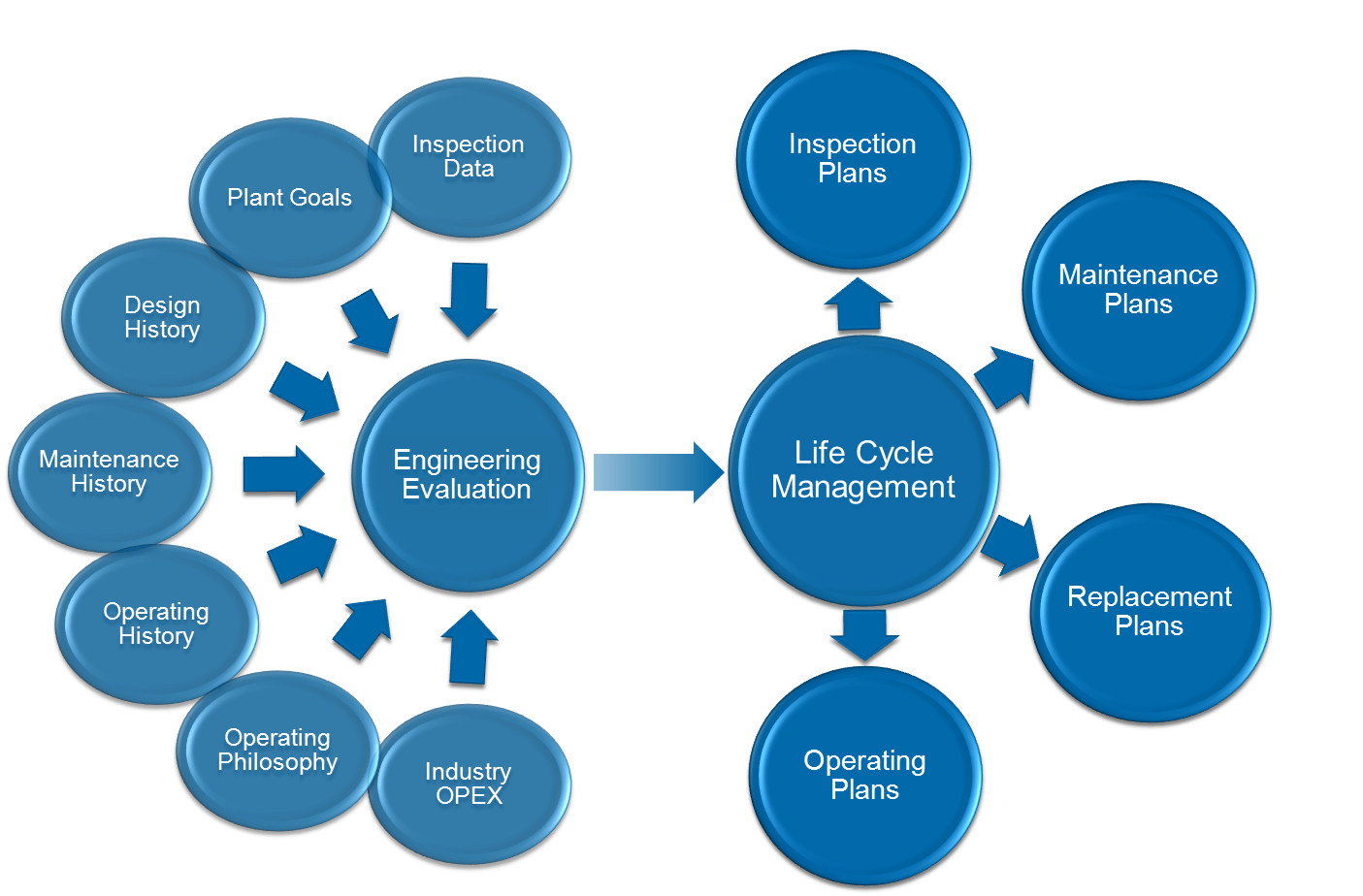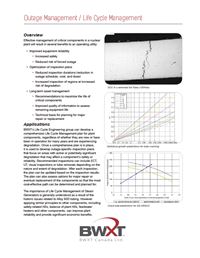EFFECTIVE MANAGEMENT OF CRITICAL COMPONENTS IN A NUCLEAR PLANT WILL RESULT IN SEVERAL BENEFITS TO AN OPERATING UTILITY:
Improved equipment reliability:
- Increased safety
- Reduced risk of forced outage
Optimization of inspection plans:
- Reduced inspection durations (reduction in outage schedule, cost, and dose)
- Increased inspection of regions at increased risk of degradation
Long-term asset management:
- Recommendations to maximize the life of critical components
- Improved quality of information to assess remaining equipment life
- Technical basis for planning for major repair or replacement
APPLICATIONS
BWXT's Life Cycle Engineering group can develop a comprehensive Life Cycle Management plan for plant components, regardless of whether they are new or have been in operation for many years and are experiencing degradation. Once a comprehensive plan is in place, it is used to develop outage-specific inspection plans that focus on areas with active or potentially significant degradation that may affect a component’s safety or reliability. Recommended inspections can include ECT, UT, visual inspections or tube removals depending on the nature and extent of degradation. After each inspection, the plan can be updated based on the inspection results. The plan can also assess options for major repair or eventual replacement of the components so that the most cost-effective path can be determined and planned for.
The importance of Life Cycle Management of Steam Generators is generally understood as a result of the historic issues related to Alloy 600 tubing. However applying similar principles to other components, including safety-related HXs, balance of plant HXs, feedwater heaters and other components, can improve plant reliability and provide significant economic benefits.
CAPABILITY AND TOOLS
BWXT’S LIFE CYCLE ENGINEERING TEAM INCLUDES EXPERTISE IN THE FOLLOWING AREAS:
Materials engineering – understanding potential degradation mechanisms applicable to various materials and plant-specific operating environments:- Stress-corrosion cracking (SCC), inter-granular attack (IGA), pitting, wastage, tube wear (at supports and foreign objects)
- Effects of pH, oxygen, chlorides, sulphur, etc. on corrosion
- Simple deterministic approach using bounding assumptions
- Semi-statistical approaches using representative distributions of critical inputs
- Full Monte-Carlo simulations using statistical distributions of all key input parameters
- Selection of appropriate ET probes based on active and potential degradation – bobbin, array probes (X-Probe), +Point, MRPC, phased array UT
- Impact of probability of detection (POD) and sizing error on analysis results
- Assist the customer in determining the best tools and path forward for any situation encountered during inspection activities. This includes scope expansion and/or repairs that may be warranted based on adverse inspection findings
- Review all inspection results to ensure that adequate data exists to support a fitness-for-service case. Assist in generating an appropriate fitness-for-service case for the conditions observed
- Work with the inspection services group to ensure they are aware of all aspects of the inspections they are performing. The Life Cycle Engineer knows the rationale behind the inspections, and can work with the inspection services group to ensure that they understand the purpose of the inspections, resulting in higher inspection quality
- Normal operating conditions and limits for startup transients and upset conditions
- Recommendations for long-term or short-term layup
- Assessment of maintenance activities such as chemical cleaning, polymer dispersants, and scale condition agents
- BWXT’s engineers participate in the development of the EPRI Primary and Secondary Water Chemistry Guidelines


